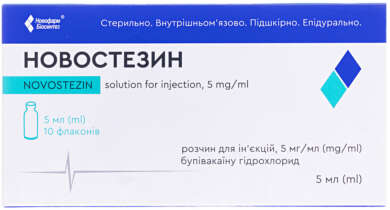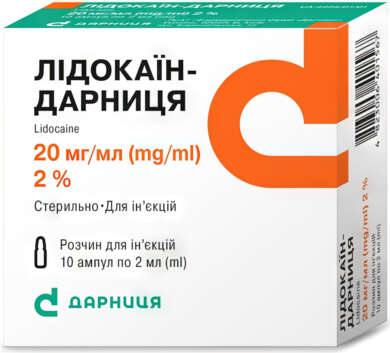Description
Buy Ketorolac Solution for injection 30 mg/ml 1 ml ampoules
Description of Ketorolac:
Ketorolac. Pain reliever. Non-narcotic analgesic. Shows anti-inflammatory and weak antipyretic activity. Ketorolac inhibits the synthesis of prostaglandins and is an analgesic of peripheral action. Ketorolac has no known effect on opiate receptors. After the use of ketorolac tromethamine in controlled clinical trials, no phenomena were observed that would indicate respiratory depression. Ketorolac tromethamine does not cause pupillary constriction.
Ingredients:
Active ingredient: 1 ml of solution contains ketorolac trometamol 30 mg;
Other ingredients: sodium chloride, sodium metabisulphite (E 223), disodium edetate, benzyl alcohol, sodium hydroxide, water for injection.
Pharmacodynamics of Ketorolac 30 mg/ml 1 ml ampoules:
Ketorolac trometamol is a non-steroidal anti-inflammatory drug (NSAID) with analgesic activity. The mechanism of action of ketorolac (as well as other NSAIDs) is not fully understood, but may consist in inhibition of prostaglandin synthesis. The biological activity of ketorolac trometamol is associated with the S-form. Ketorolac trometamol does not have sedative or anxiolytic properties.
The biggest difference between large and small doses of ketorolac is the duration of analgesia. An analgesic dose of ketorolac also has an anti-inflammatory effect.
Pharmacokinetics of Ketorolac 30 mg/ml 1 ml ampoules:
Ketorolac trometamol is a racemic mixture of [-]S- and [+]R-enantiometric forms, with analgesic activity due to the S-form. After administration, ketorolac is rapidly and completely absorbed. The average maximum plasma concentration of 2.2 μg / ml is reached on average 50 minutes after a single dose of 30 mg.
Linear pharmacokinetics. In adults, after the administration of ketorolac trometamol in the recommended dosage ranges, the clearance of the racemate does not change. This indicates that the pharmacokinetics of ketorolac trometamol in adults after single or repeated intramuscular administration of ketorolac trometamol is linear. At higher recommended doses, a commensurate increase in the concentrations of free and bound racemate is observed.
The drug does not penetrate well through the blood-brain barrier. Ketorolac crosses the placenta and in small amounts – breast milk. More than 99% of ketorolac in plasma is protein bound over a wide range of concentrations.
Indications for use of Ketorolac 30 mg/ml 1 ml ampoules:
Relief of moderate and severe postoperative pain for a short time.
Contraindications:
- Increased sensitivity to the components of the drug;
- Patients with an active peptic ulcer, with recent gastrointestinal bleeding or perforation, with peptic ulcer disease or gastrointestinal bleeding in the anamnesis;
- Bronchial asthma, rhinitis, angioneurotic edema or urticaria caused by the use of acetylsalicylic acid or other NSAIDs (due to the possibility of severe anaphylactic reactions);
- Bronchial asthma in history;
- Severe heart failure;
- Complete or partial syndrome of nasal polyps, Quincke’s edema or bronchospasm;
- Do not apply to patients who had surgery with a high risk of bleeding or incomplete bleeding, and to patients receiving anticoagulants, including low doses of heparin (2500-5000 IU every 12 hours);
- Hepatic or moderate or severe renal insufficiency (creatinine level in blood serum more than 160 μmol/l);
- Suspected or confirmed cerebrovascular bleeding, hemorrhagic diathesis, including blood coagulation disorders and a high risk of bleeding;
- Simultaneous treatment with other NSAIDs (including selective cyclooxygenase inhibitors), acetylsalicylic acid, warfarin, pentoxifylline, probenecid or lithium salts;
- Hypovolemia, dehydration with the risk of renal failure due to a decrease in fluid volume;
- The drug is contraindicated in contractions;
- Epidural or intrathecal administration of the drug is contraindicated;
- Ketorolac is contraindicated for prophylactic use before surgical operations, as it delays the aggregation of platelets and is also contraindicated during surgery due to the increased risk of bleeding.
Interactions:
Ketorolac significantly binds to plasma proteins (99.2% on average). Ketorolac trometamol does not alter the pharmacokinetics of other agents due to enzyme induction or inhibition.
Warfarin, digoxin, salicylates and heparin. Trometamol slightly reduced the binding of warfarin to plasma proteins in vitro and did not alter the binding of digoxin to plasma proteins. In vitro studies show that at therapeutic concentrations of salicylates (300 µg/mL), ketorolac binding decreased from approximately 99.2% to 97.5%, indicating a potential two-fold increase in plasma levels of unbound ketorolac. Therapeutic concentrations of digoxin, warfarin, ibuprofen, naproxen, piroxicam, acetaminophen, phenytoin and tolbutamide do not alter the binding of ketorolac trometamol to plasma proteins. The simultaneous use of ketorolac and prophylactic use of heparin in small doses (2500-5000 IU in 12 hours) has not been widely studied, but may be associated with an increased risk of bleeding. Patients who use anticoagulants or low doses of heparin should not be given ketorolac.
Acetylsalicylic acid. When used with acetylsalicylic acid, the binding of ketorolac to plasma proteins decreases, although the clearance of free ketorolac does not change. The clinical significance of this type of interaction is unknown, although, as with other NSAIDs, it is not recommended to simultaneously prescribe ketorolac trometamol and acetylsalicylic acid due to the potential increase in the frequency of side effects.
Diuretics. In some patients, ketorolac is able to reduce the natriuretic effect of furosemide and thiazides. During concomitant therapy with NSAIDs, the patient should be closely monitored for signs of renal failure, and also to ensure the effectiveness of diuretic drugs (see “Peculiarities of use”). In healthy volunteers with normal blood volume, ketorolac reduces the diuretic effect of furosemide by about 20%; therefore, special attention is needed when prescribing ketorolac to patients with cardiac decompensation.
Probenecid. The concomitant use of ketorolac trometamol and probenecid led to a decrease in the clearance of ketorolac and a significant increase in its plasma levels and T½. Therefore, the simultaneous use of ketorolac trometamol and probenecid is contraindicated.
Oxpentifylline. Not recommended due to increased risk of bleeding.
Lithium. The simultaneous use of NSAIDs and lithium preparations is contraindicated.
Opioid analgesics. The effect of opioid analgesics is enhanced, which makes it possible to reduce the dose of the latter during anesthesia.
Anticoagulants. With simultaneous use with anticoagulants, increased bleeding is possible. Simultaneous use with anticoagulants (for example, warfarin) is contraindicated.
Cardiac glycosides. NSAIDs can exacerbate heart failure, reduce glomerular filtration rate and increase plasma levels of cardiac glycosides when used with the latter.
Methotrexate. At the same time, it should be prescribed with caution, it is possible to increase the toxicity of methotrexate due to suppression of kidney function.
ACE inhibitors. The simultaneous use of ACE inhibitors increases the risk of developing renal dysfunction, especially for patients with a reduced volume of interstitial fluid.
NSAIDs may reduce the hypotensive effect of ACE inhibitors. This interaction should be kept in mind when prescribing NSAIDs together with ACE inhibitors.
Anticonvulsants. Isolated cases of seizures have been reported with the simultaneous use of ketorolac trometamol and anticonvulsants (phenytoin, carbamazepine).
Psychotropic drugs. With the simultaneous use of ketorolac and psychotropic drugs (fluoxetine, thiotexen, alprazolam), hallucinations have been reported.
Pentoxifylline. The simultaneous use of ketorolac trometamol and pentoxifylline increases the risk of bleeding.
Non-polarizing muscle relaxants. Formal studies of the concomitant use of ketorolac trometamol and muscle relaxants have not been conducted. In animal and human studies, there was no evidence that ketorolac tromethamine induces or inhibits liver enzymes that are capable of metabolizing it or other drugs. Therefore, ketorolac is not expected to alter the pharmacokinetics of other drugs through an enzyme induction or inhibition mechanism. NSAIDs may reduce the excretion of baclofen (increased risk of toxicity).
Cyclosporine. As with all NSAIDs, ciclosporin should be given with caution because of the increased risk of nephrotoxicity.
mifepristone. After the use of mifepristone, NSAIDs should not be used for 8-12 days,
Side effects:
The most frequently reported adverse reactions to the drug were diarrhea, nausea and vomiting.
The list of adverse reactions to the drug known from clinical studies of Augmentin and post-registration surveillance and classified according to the MedDRA system organ class is listed below:
Infections and invasions.
Often: candidiasis of the skin and mucous membranes.
Not known: overgrowth of non-susceptible organisms.
From the hematopoietic and lymphatic system.
Rare: reversible leukopenia (including neutropenia) and thrombocytopenia.
Not known: reversible agranulocytosis and hemolytic anemia; increase in bleeding time and prothrombin index1.
From the side of the immune system.
Not known: angioedema, anaphylaxis, serum sickness-like syndrome, allergic vasculitis.
From the side of the nervous system.
Uncommon: dizziness, headaches.
Not known: reversible hyperactivity and seizures2.
Not known: aseptic meningitis.
From the gastrointestinal tract.
Very common: diarrhea.
Often: nausea, vomiting.
Uncommon: indigestion.
Not known: antibiotic-associated colitis 4, black hairy tongue.
Hepatobiliary disorders.
Infrequently: increased levels of AST and / or ALT.
Not known: hepatitis6 and cholestatic jaundice6.
From the side of the skin and subcutaneous tissues.
Uncommon: skin rash, itching, urticaria.
Rare: erythema multiforme.
Not known: Stevens-Johnson syndrome, toxic epidermal necrolysis, bullous exfoliative dermatitis, acute generalized exanthematous pustulosis9, drug reaction with eosinophilia and systemic symptoms (DRESS).
From the side of the kidneys and urinary tract.
Not known: interstitial nephritis, crystalluria.
Nausea is more commonly associated with higher oral doses of the drug. If gastrointestinal reactions occur, their severity may be reduced by taking Augmentin with meals.
Including pseudomembranous colitis and hemorrhagic colitis.
Moderate elevations in AST and/or ALT levels were more common in patients treated with beta-lactam antibiotics, but the significance of these findings is unknown.
These phenomena were observed with the use of other antibiotics of the penicillin and cephalosporin series.
If hypersensitivity reactions (dermatitis) occur, the drug should be discontinued.
Overdose of Ketorolac 30 mg/ml 1 ml ampoules:
Symptoms: inhibition, lethargy, drowsiness, nausea, vomiting, pain in the epigastric region, gastrointestinal bleeding, arterial hypertension, acute renal failure, respiratory depression and coma, convulsions. It was reported about the development of anaphylactoid reactions.
Single overdoses of ketorolac have at various times resulted in abdominal pain, nausea, vomiting, hyperventilation, peptic ulcers and/or erosive gastritis and impaired renal function, which resolved after discontinuation of the drug.
With the introduction of 360 mg of ketorolac intramuscularly for 5 days, abdominal pain and peptic ulcers were observed, which were cured after discontinuation of the drug. In case of overdose, nausea, headache, dizziness, disorientation, tinnitus and hyperventilation are also observed. Suicide attempts have been reported. In case of deliberate overdose, metabolic acidosis is observed.
Treatment: symptomatic and supportive therapy. There is no specific antidote. Patients not later than 4 hours after taking the drug with symptoms of an overdose or after a large overdose (when taking an oral dose that is 5-10 times more than usual), you need to induce vomiting, take activated charcoal (60-100 g for adults) and / or take an osmotic laxative. The use of forced diuresis, urine alkylation, hemodialysis or blood transfusion is ineffective due to the high binding of the drug to plasma proteins. Careful monitoring of the patient should be carried out, liver and kidney function should be monitored. With prolonged convulsions, treatment with intravenous diazepam is recommended.
Storage:
Store below 25°C in original packaging. Keep out of the reach of children.
Shelf life:
3 years.






Reviews
There are no reviews yet.